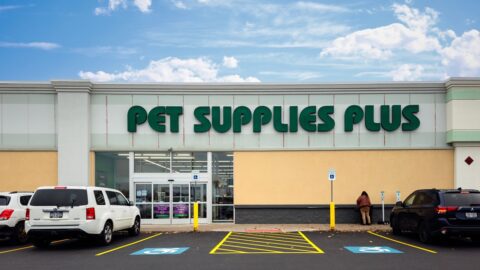Consumer demand for instant access to product information is driving developments around in-store technology. Ben & Jerry’s, 4food, The Home Depot and Motorola are a selection of companies introducing innovative new customer-facing retail strategies in the areas of: mobile POS, coupons and specials; smartphone check-out capabilities; personalized promotions; digital signage linked to Twitter feeds; improved in-store communications; cloud-based POS solutions; and other real-time strategies.
“The point of sale is not just located at the checkout: customers want to be able to shop from multiple touch points, whether it is online, a mobile POS or their own smartphones, and retailers need to be able to accommodate this new, technology-savvy customer,” said Ken Morris, Principal of Boston Retail Partners. “As we talk to retailers about their technology plans, it is refreshing to see the shift as they realize that to succeed they need to think about POS differently.”
The Influence Of Mobile Technology
Major developments around in-store technology feature a focus on new POS strategies such as mobile POS and customer smartphones as the checkout device, according to the Boston Retail Partners 13th Annual POS Benchmarking Study. This shift “is in direct response to consumers’ growing demand for immediate gratification, and is changing the playing field forever,” the study noted. Merchants are finding that they need to have real-time capabilities to meet this demand.
Advertisement
Retailers are planning significant investments in mobile to expand their current in-store platforms. The number of retailers operating a mobile channel this year has increased by more than half, the benchmark study noted, with 33% of respondents indicating that they added mobile to their in-store marketing efforts in 2012, compared to 12% who did so the previous year.
In addition, approximately 40% of retailers said they plan to facilitate the use of smartphones for checkout within the next two years, according to the study, while only 8% already have implemented this functionality.
Additional customer-facing mobile functions retailers plan to implement within the next two years, as reported in the BRP benchmark study, are:
- Mobile loyalty identification (52%);
- Mobile coupons, specials and promotions (52%);
- Share with a friend via email/social networking sites (40%);
- Electronic receipt (40%);
- Shopping/wish list (36%); and
- Mobile payment ability (36%).
“As consumers get more comfortable with [mobile] technology and the range of options available to them through their smartphones,” the study revealed, “the opportunities will be endless.”
Deloitte anticipates that influence of mobile will grow to represent 19% of total store sales by 2016, totaling $689 billion in mobile-influenced sales, as noted in the report titled: The Dawn Of Mobile Influence: Discovering The Value Of Mobile In Retail. By comparison, direct mobile commerce sales will pass the $30 billion mark by that time, according to industry estimates.
The adoption of handheld computers and tablet PCs at retail is occurring rapidly. Most (75%) of today’s retailers utilize desktop computers within their stores for customer-facing applications, according to the Motorola Solutions Mobile POS Study. However, going forward, only 54% will continue to use desktop PCs while 51% of respondents will incorporate tablet computers and another 50% also will utilize smartphones.
Retailers planning to implement mobile POS have several goals ? topped by offering a better customer experience, according to the Motorola study. The top five goals for mobile POS technology, as found in the mobile POS report, are:
1) Better customer service (71%);
2) Saving the sale/Special Order for out-of-stocks (27%);
3) Custom orders or assisted shopping (26%);
4) Line busting (23%); and
5) Serving locations not suitable for fixed POS (23%).
A key to providing a satisfactory in-store shopping experience is “a modern POS system,” according to a retail pricing benchmark report conducted by RSR. As many as 62% of retail winners have been using a modern POS for longer than a year, the report found, while for laggards, that number is only 25%.
Winners also recognize the need to provide a seamless shopping experience, more so at check-out, the RSR study revealed: “In fact, most understand that new POS systems capture customer data while providing shoppers with cross-promotional and ‘save the sale’ opportunities that are pivotal to in-store shoppers and retailers.”
Leveraging The Smartphone
Smartphone shoppers are more frequent buyers, noted the Deloitte report. Approximately half (48%) of smartphone owners said using their devices to browse has influenced their in-store purchase decisions, while 61% of owners who have used their devices to shop and buy have done so while in a store.
Some retailers consider mobile in-store usage to be an immediate threat to sales, but according to the Deloitte study, this behavior has been an influential part of the in-store shopping experience. “The overall decision-making process differs depending on the consumer, shopping trip, and where that consumer is in the shopping journey,” said Kasey Lobaugh, Direct-to-Consumer and Retail Multichannel Leader at Deloitte Consulting LLP, in an interview with Retail TouchPoints. “There’s no denying the fact that consumers are becoming more tech-savvy and want more knowledge and information at the point of decision-making. Retailers can either stick their heads in the sand and complain that in-store mobile shopping is a threat, or combat aggressively to defend against it and win in that dimension.”
Retailers also are working to implement mobile coupons, specials and personalized promotions. “Only 20% [of respondents] offer this ability today, but another 50% plan to implement these services in the next two years,” according to the BRP report. While many retailers already collect email addresses to push coupons or promotions to customers, “the next step is to push these personalized promotions directly to a customer’s smartphone,” the report disclosed. “They even can be triggered when a customer walks into the store, with the promotions reaching the customer faster and when it is more relevant.”
The Impact Of Social Media Mobile Use
Consumers’ ability to share the in-store shopping experience through social channels such as Facebook and Twitter is an area of interest for retailers, revealed BRP’s benchmark study. As many as 40% of retailers said they already offer this capability to shoppers, while another 36% said they plan to offer this capability within the next two years.
Retailers are recognizing the social channel as a cost-effective and successful marketing tool to get in front of their customers. These sites provide the ability for retailers to promote new products, list in-store events, and provide personalized customer efforts, according to the BRP report.
In addition, more retailers are combining the power of digital signage and social media in order to deliver a compelling shopping experience.
In one example, Ben & Jerry’s announced a partnership with Scala in June 2012, to deploy digital menu boards along with a live Twitter feed for its Tokyo flagship store. “Having digital signage provides a new, cool way for us to connect with customers and helps us build on creating memorable experiences they cannot get anywhere else,” said Shintaro Nakagawa, Brand Manager of Ben & Jerry’s, in a press release.
4food, known to many as the “social media burger joint,” also partnered with Scala to provide customers with an interactive social board that features a Twitter feed and foursquare check-ins to help promote customer in-store activity and reviews.
In addition, 4food rolled out a 240-square-foot LED media wall to showcase menu options created by employees and customers. “A digital, self-driven menu is much more informative as well as intuitive to use,” Michael Shuman, Co-Founder of 4food told Retail TouchPoints. “If you’ve registered with 4food, utilizing the digital menu expedites access to your account, credit points and order history, allowing 4food to know your ‘likes’ and ‘dislikes,’ and accelerates the overall ordering process at the point of sale.”
The customer- and employee-created menu items help emphasize the ingredients and products at 4food as customers save, name and market their own creations on the LED menu screen. “Customers who are successful in selling their products receive 25 cents on their account for each item sold,” said Shuman. “They also handle all the social media/viral marketing, deepening our sense of branding.”
The company plans to launch its own cloud-based POS inventory management portal, reported Shuman, comprised of a series of customer-facing mobile applications. These mobile solutions will assist customers in ordering, building unique creations, naming and branding, as well as marketing products through social channels.
Arming Store Associates With Mobile
Today’s tech-savvy consumers are very well-informed about the products they intend to purchase. To ensure that store associates have instant access to the latest product information, including pricing and competitive position ? and are just as or more informed than these shoppers ? many retailers are empowering associates with mobile devices. According to a recent 2012 retail store report conducted by Aberdeen Research, all mega retailers ? those with more than $5 million in annual sales ? cited the ability to educate and empower in-store employees via technology as a top opportunity for mobile. Many other retailers also are equipping store associates with mobile technologies that allow employees to locate and sell inventory from anywhere within the store.
“When you think about POS and where that’s headed, so often we find that a sales associate will have to leave the customer’s side to complete a transaction,” Jerry McNerney, Enterprise Marketing Senior Director of Motorola Solutions, told Retail TouchPoints. “If store associates are not able to guide technology-savvy consumers through the buying process, and close the transaction quickly, wherever [the associates] are in the store, the shopper’s view and expectations of the whole in-store environment will transform to something less positive.”
In-Store Mobile Technology In Action
The implementation of mobile can help retailers obtain new ways to streamline back- and front-end communications. McNerney noted that The Home Depot recently deployed mobile devices for all of their store associates, with each receiving identical units. “The Home Depot empowered its store associates with new and fast access to product information,” he explained. “The roll-out eliminated the associates’ ‘fear factor:’ previously, if a customer had a question, store associates were somewhat resistant to helping, because they didn’t have the means to quick back- and front-end communications without leaving the customer to find the necessary information. With the new devices, associates can find answers quickly, giving them a greater level of confidence in proactively helping customers.”
One of the best ways for retailers to better understand the role of in-store mobile, said McNerney, is to observe smartphone users as they interact with store associates. “In-store technologies such as mobile are creating new and advanced capabilities around a well-recognized theme: using personalization to strengthen customer loyalty.”
Understanding the consumer’s demand for instant gratification is top of mind for retailers, and as a retailer’s size increases, so does the need to treat inventory as a shared resource ? for example, utilizing stores as distribution centers and online inventory for in-store fulfillment, the Aberdeen report noted. It said “80% of mega retailers and 47% of those with $1 billion to $5 billion in annual sales cite inventory sharing as a top-three opportunity, compared to only 24% of small and 31% of mid-sized retailers.
Big, heavy in-store hardware such as the cash register is fading out as more retail transactions are mobilized. “Although retailers may still need a traditional cash register somewhere in the store,” noted McNerney, “an associate’s ability to complete more transactions with a mobile device is becoming more commonplace in the retail environment.”














